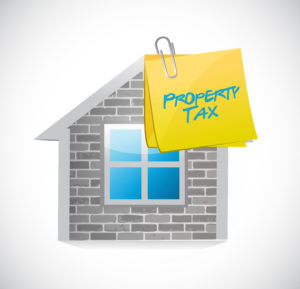As a property owner, residential and investment alike, taxes are inevitable. On top of that, as Austin area home prices continue rising, it only seems likely that Central Texas homeowners will also see an increase in their property taxes. But, that doesn’t mean the value of your home determined for tax purposes is correct or you should be subject to pay exactly what the appraisal district says you owe. Lucky for you, there is a way to remedy potential mistakes: disputing your property taxes. Here’s a brief overview of the property tax dispute process:
Appraisal > Appraisal District Sends Notice of Home Value > File a “Notice of Protest” Form with Your County Tax Assessor’s Office > Informal Meeting > Hearing (if necessary) > Arbitration
Now, let’s dive in deeper…
January 1st – The Appraisal
An appraiser determines the value of your home by looking at its condition and current market value – on this particular date.
Late April/Early May – The Appraisal District Sends Notice of Home Value
By late April or early May, the county appraisal district will send you a form telling you the value of your home for tax purposes. When you receive this form, look over it carefully to make sure there are no errors. In the event you find errors or the value appears way too high, you can begin the process to dispute. If you did not receive this notice, contact your respective County Tax Assessor’s office as they may have the incorrect mailing address on file. While this is not likely for your residential property, it may be the case for any investment properties.
May 31 – File a “Notice of Protest” Form with Your County Tax Assessor’s Office
The deadline to file a “Notice of Protest” form with your County Tax Assessor’s office is May 31. If this date falls on a weekend, you have until the next business day (the Monday after the weekend) to file. As this date is around a month after the notices were sent, you need to make the decision to protest in a short amount of time – so don’t waste any time! How do you file? There are several options here. One, use the form on the back of the “Notice of Appraised Value” form that you receive from the appraisal district. Two, file your protest online: Hays, Travis or Williamson County. Once on your respective website, click on “Online Protests” and follow the directions. Pay special attention to the section where you check the box stating the reason for your protest. Why? The box you check affects the evidence you can present.
June 1 – Meet with the Appraiser: “The Informal Meeting”
After you’ve filed, the Central Appraisal District will send you a letter with two dates: an informal meeting with a member of the appraisal staff and a formal hearing date with the ARB. During the informal meeting, the staffer will review the numbers with you. Make sure to bring all the documentation you have compiled: information on comparable homes (you can find this information on the appraisal district’s website), perhaps an independent appraisal if you recently refinanced your house, or photos, repair estimates and other records showing damage that may reduce the value of your home. Once you and a staffer have talked things out, the district may offer to reduce your value by a certain amount. If you’re satisfied, you can accept it. If not, you can keep your date with the ARB.
The Formal Hearing
The formal hearing takes around 15 to 30 minutes. During that time, you are placed under oath and given a chance to present any evidence or witnesses supporting your case. The hearing concludes when you state the figure you believe your property is worth. The three-member panel will discuss the case and reach a recommended value. You’ll get a certified letter in the mail with the decision.
Do you have any questions regarding disputing your property taxes? Consider TALK Property Management a resource! We are available to help anytime.



